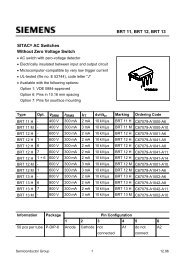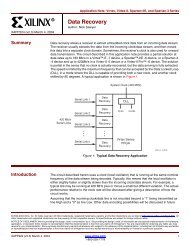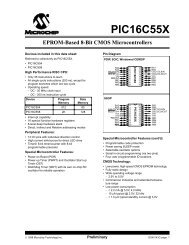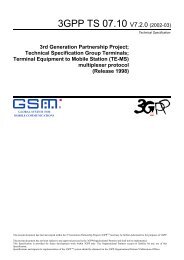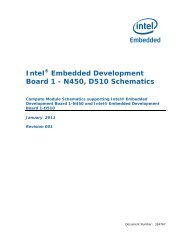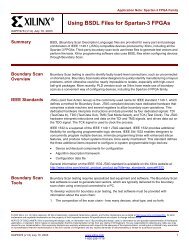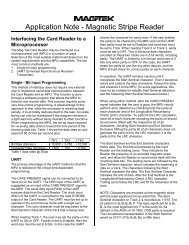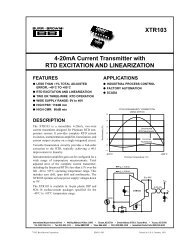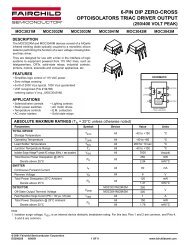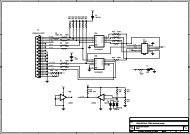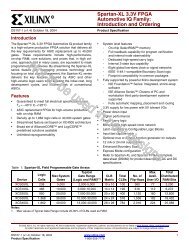Programmable Logic Design Quick Start Handbook
Programmable Logic Design Quick Start Handbook
Programmable Logic Design Quick Start Handbook
Create successful ePaper yourself
Turn your PDF publications into a flip-book with our unique Google optimized e-Paper software.
PROGRAMMABLE LOGIC DESIGN: QUICK START HANDBOOK • CHAPTER 2<br />
Multipliers<br />
• Enable simple arithmetic and math as well as advanced DSP functions,<br />
enabling you to derive more than 330 billion MACs/s of DSP<br />
performance<br />
• As many as 104 18 x 18 multipliers support 18-bit signed or 17-bit<br />
unsigned multiplication, which you can cascade to support wider bits<br />
• Constant coefficient multipliers: On-chip memories and logic cells work<br />
hand-in-hand to build compact multipliers with a constant operand<br />
• <strong>Logic</strong> Cell multipliers: Implement user-preferred algorithms such as<br />
Baugh-Wooley, Booth, Wallace tree, and others<br />
DCMs deliver sophisticated digital clock management that’s impervious to<br />
system jitter, temperature, voltage variations, and other problems typically<br />
found with PLLs integrated into FPGAs.<br />
• Flexible frequency generation from 25 MHz to 325 MHz<br />
• 100 ps jitter<br />
• Integer multiplication and division parameters<br />
• Quadrature and precision phase shift control<br />
• 0, 90, 180, 270 degrees<br />
• Fine grain control (1/256 clock period) for clock data<br />
synchronization<br />
• Precise 50/50 duty cycle generation<br />
• Temperature compensation<br />
XCITE Digitally Controlled Impedance Technology – A Xilinx<br />
Innovation<br />
I/O termination is required to maintain signal integrity. With hundreds of<br />
I/Os and advanced package technologies, external termination resistors are no<br />
longer viable.<br />
I/O termination dynamically eliminates drive strength variation due to<br />
process, temperature, and voltage fluctuations.<br />
Spartan-3 XCITE DCI Technology Highlights<br />
• Series and parallel termination for single-ended and differential<br />
standards<br />
• Maximum flexibility with support of series and parallel termination on<br />
all I/O banks<br />
• Input, output, bidirectional, and differential I/O support<br />
• Wide series impedance range<br />
• Popular standard support, including LVDS, LVDSEXT, LVCMOS,<br />
LVTTL, SSTL, HSTL, GTL, and GTLP<br />
Xilinx • 28



